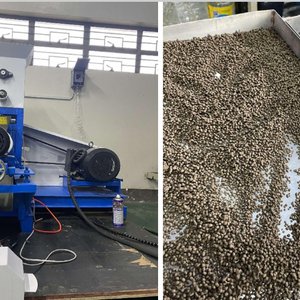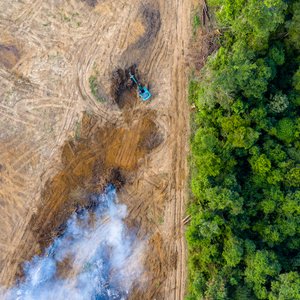Fish consumption reaches all-time high, no improvement in level of global fish stocks
Fisheries and aquaculture support the livelihoods of an estimated 540 million people.
The contribution of fish to global diets has reached a record of about 17 kg per person on average, supplying over three billion people with at least 15 percent of their average animal protein intake. This increase is due mainly to the ever-growing production of aquaculture which is set to overtake capture fisheries as a source of food fish, according to the State of the World's Fisheries and Aquaculture, released today. The report also stressed that the status of global fish stocks has not improved.
Overall, fisheries and aquaculture support the livelihoods of an estimated 540 million people, or eight percent of the world population. People have never eaten as much fish and more people than ever are employed in or depend on the sector.
Fish products continue to be the most-traded of food commodities, worth a record $102 billion in 2008, up nine percent from 2007.
The overall percentage of overexploited, depleted or recovering fish stocks in the world's oceans has not dropped and is estimated to be slightly higher than in 2006. About 32 percent of world fish stocks are estimated to be overexploited, depleted or recovering and need to be urgently rebuilt, the report says.
On the other end of the scale, 15 percent of the stock groups monitored by FAO were estimated to be underexploited (three percent) or moderately exploited (12 percent) and therefore able to produce more than their current catches.
"That there has been no improvement in the status of stocks is a matter of great concern," said senior FAO fisheries expert Richard Grainger, one of the report's editors. "The percentage of overexploitation needs to go down although at least we seem to be reaching a plateau."
The report examines the growing legal efforts to enforce tighter controls on the fisheries sector, for example, through trade measures and against illegal, unreported and unregulated fishing.
The trade measures are meant to block entry of such fish and fish products from international trade in an effort to better manage the entire fisheries sector and reduce levels of overexploitation. A recent study estimates the cost of illegal and unreported fishing alone at $10-23.5 billion per year.
The report also notes increasing debate about a proposed global record of fishing vessels, which ideally would assign a unique vessel identifier to each vessel that would remain constant regardless of ownership or flag changes over time. Such transparency would make it easier to police vessels engaged in illegal fishing activities.
The increasing demand for fish highlights the need for the sustainable management of aquatic resources. The report recommends an ecosystem approach to fisheries, which is an integrated approach for balancing societal objectives with the state of the fishery and its natural and human environment.
Total world production of fish and fish products rose from 140 million tonnes in 2007 to 145 million tonnes in 2009, according to the FAO report. Much of the fish now comes from aquaculture, which is growing at the rate of almost seven percent a year.
The report held up aquaculture policies in Southeast Asia — where fish is a fundamental part of people's diets — as a good example of balanced management. The report praised continuously improving government interventions built on comparative advantages and economic incentives that lead to growth, food security and better living standards.
The report contains a special chapter on inland fisheries. Inland fisheries are often overlooked by policymakers and irrigation and hydroelectric schemes are at times planned without regard for the impact on inland fishers' livelihoods. However, inland fisheries supports 61 million people worldwide.
"Fish is a good quality and high protein food and the sector contributes in an important way to world food security," said Grainger.
Download Full Report
Contents
Foreword (Download 851 Kb)
Acknowledgements
Abbreviations and acronyms
PART 1
WORLD REVIEW OF FISHERIES AND AQUACULTURE (Download 1.6Mb)
Fisheries resources: trends in production, utilization and trade
Notes
PART 2
SELECTED ISSUES IN FISHERIES AND AQUACULTURE (Download 970 Kb)
Trade measures against IUU fishing
Maintaining biosecurity in aquaculture
Which fish to eat: enjoying the benefits while minimizing the risks
Fisheries sector transparency
Notes
PART 3
HIGHLIGHTS OF SPECIAL STUDIES (Download 1.6 Mb)
Climate change implications for fisheries and aquaculture:
overview of current scientific knowledge
From drain to gain in capture fisheries rents: a synthesis study
Abandoned, lost or otherwise discarded fishing gear
Private standards and certification in fisheries and aquaculture:
current practice and emerging issues
Aquaculture development in Southeast Asia: the role of policy
Human dimensions of the ecosystem approach to fisheries
Geographic information systems, remote sensing and mapping for the
development and management of marine aquaculture
Global review of aquaculture development 2000–2010
Using the Internet for fisheries policy and management advice
Notes
PART 4
OUTLOOK (Download 1.3 Mb)
What future for inland fisheries?
Notes







